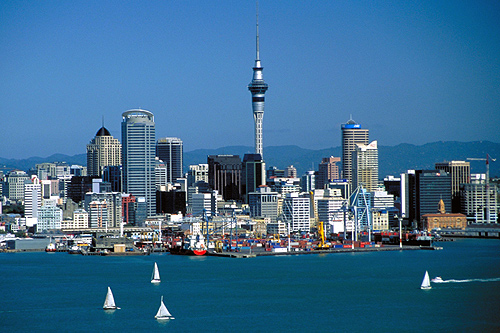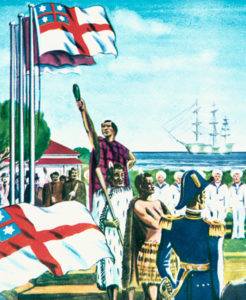Unless you can answer the following questions, you have no idea of New Zealand’s true history.
QUESTIONS
1. Who smuggled 800 muskets from England into New Zealand in 1820?
2. Who went on a rampage south slaughtering thousands of men, women, and children for the fun of it and the feasts that followed?
3. Why did the 13 Ngapuhi Chiefs write to the King asking for protection?
4. Why was the Declaration of Independence a complete failure?
5. How and when were the boundaries of New South Wales extended to include New Zealand, placing New Zealand under the dependency of New South Wales?
6. Who drafted the instruction for Lt. Governor Hobson to write the Treaty of Waitangi?
7. What did tangata Maori give up in the Tiriti o Waitangi?
8. What did tangata Maori gain by the Tiriti o Waitangi?
9. How did New Zealand become a British Colony?
10. How did Lt, Governor Hobson become Governor of New Zealand?
11. How was New Zealand’s Government formed under one flag to make laws, irrespective of race, colour, or creed?
12. How did New Zealand get a political, justice and legal system?
13. When was the legislative Council formed?
14. When was our first Constitution issued and by whom?
15. When was the first sitting of the Legislative Council?
16. Who set up land titles and returned land to the chiefs that had been sold by them before 6 February 1840?
17. Why did Chief Justice Prendergast rule the Treaty a “Simple nullity” in 1877?
18. Where does it say, the Treaty was, “A Partnership between Maori and the Crown”?
ANSWERS.
1. Hongi Hika, Ngapuhi.
2. Hongi Hika and his Ngapuhi followers.
3. They were afraid the southern tribes were arming themselves for utu/revenge.
4. James Busby could only get 52 chiefs to sign it before it was abandoned.
5. By Royal Charter dated the 30 July 1839.
6. James Stephen, the Under-Secretary of Colonies, and a strong supporter of the Clapham Sect.
7. They gave up their kawanatanga/government.
8. They became British Subjects with same rights as the people of England. This advanced tangata Maori a 1000 years in their culture, stopped the intertribal wars and gave one law for all without tangata Maori lifting a finger.
9. By Royal Charter issued by “Victoria by the Grace of God” under, “The Great Seal of the United Kingdom of Great Britain and Ireland”, dated 16 November 1840.
10. By Royal Charter issued by “Victoria by the Grace of God” under, “The Great Seal of the United Kingdom of Great Britain and Ireland”, dated 16 November 1840.
11. By a Constitution issued by “Victoria by the Grace of God” under, “The Great Seal of the United Kingdom of Great Britain and Ireland”, dated 16 November 1840.
12. By a Constitution issued by “Victoria by the Grace of God” under, “The Great Seal of the United Kingdom of Great Britain and Ireland”, dated 16 November 1840.
13. May 3, 1841. Lt. Governor Hobson became Governor of New Zealand.
14. By “Victoria by the Grace of God” under, “The Great Seal of the United Kingdom of Great Britain and Ireland”, dated 16 November 1840.
15. May 3, 1841. New Zealand formed a government under one flag and one law.
16. The New Zealand Colonial Government.
17. “So far indeed as that instrument (The Treaty of Waitangi) purported to cede the sovereignty, it must be regarded as a ‘simple nullity’. No political body existed capable of making cession of sovereignty”.
18. There is absolutely nothing in the Treaty of Waitangi that mentions, “A Partnership between Maori and the Crown”, absolutely nothing!
All the above questions and answers are based on documentation from Archives around the world, the British Parliamentary Papers and documents obtained under the Official Information Act by the One New Zealand Foundation Inc.
With British Sovereignty firmly asserted by November 1840, Queen Victoria’s Royal Charter/Letters Patent dated the 16 November 1840 separated New Zealand from New South Wales dependency and New Zealand became a British Colony on the 3 May 1841. Lt. Governor Hobson was sworn in as the Colonies first Governor with a Constitution to form a government to make and enforce English law over the whole country and its people. By now the Tiriti o Waitangi had served its purpose and was filed away. It was just one small part in the process of New Zealand becoming a British Colony and tangata Maori becoming British Subjects with the same rights as the people of England under one flag and one law, English Law!
Queen Victoria’s 1840 Royal Charter/Letters Patent dated the 16 November 1840 was New Zealand true Founding Document and first Constitution!
If any information is found to be incorrect, please supply official documented history to support your findings and the above will be amended.
ROSS BAKER.
Researcher, One New Zealand Foundation Inc. Email: [email protected]. 5/3/2021
http://onenzfoundation.co.nz/


